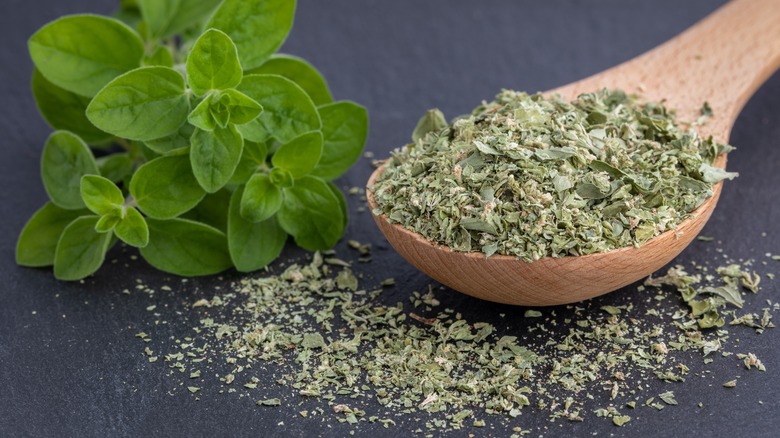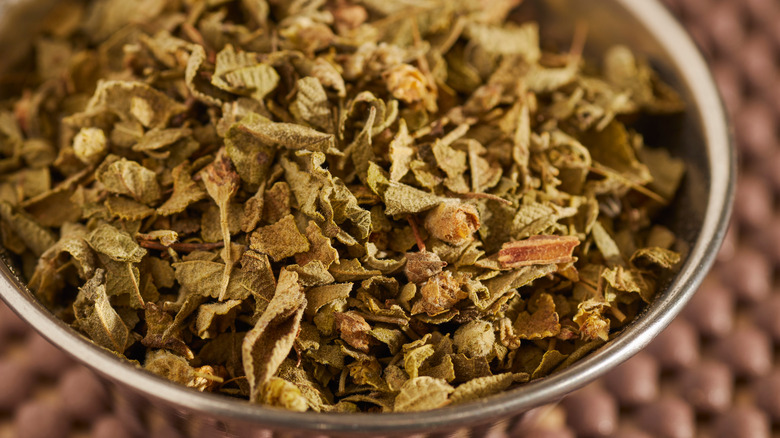What Makes Mexican Oregano Different From The Common Variety?
If you find yourself making a Mediterranean or Italian dish, the recipe might call for oregano, or as it's sometimes known, the pizza spice. What happens however, if you're making an enchilada casserole or chicken tortilla soup and it calls for Mexican oregano? Are they the same?
In addition to adding flavor, both of these herbs have health benefits. According to Healthline, oregano is rich in antioxidants and can help fight bacteria, viral infection, and inflammation. Mexican oregano on the other hand contains naringenin, which is thought to help prevent heart disease, and cancer. Some research even suggests it may help stave off Alzheimer's disease (per Go to Chef). Mexican oregano may also help fight off viral infection, so sprinkling either on top of your soup or stew when you're under the weather might get you back on your feet faster. So does this mean you can sub one for the other?
Here's the difference
According to Epicurious, while oregano and Mexican oregano are often believed to be interchangeable, they are actually from entirely different plants. Mexican oregano comes from the verbena plant family, while Mediterranean oregano comes from the origanum family. Not only that, but Bon Appétit notes that they have entirely different aromas and flavor profiles. Oregano has some more bitter, peppery notes and a very specific aroma you might recognize from sprinkling it onto your slice of pizza. Mexican oregano on the other hand is described as having brighter, citrusy notes that are more floral upon first whiff. If your recipe calls for Mexican oregano and you have none on hand, Epicurious notes that you can try dried marjoram, or dried verbena as they are closer in flavor and scent to Mexican oregano. Oregano itself won't have the same impact on your recipe. Curious to experience the flavor and aroma side by side? Try stocking your pantry with both and see which you like best.

